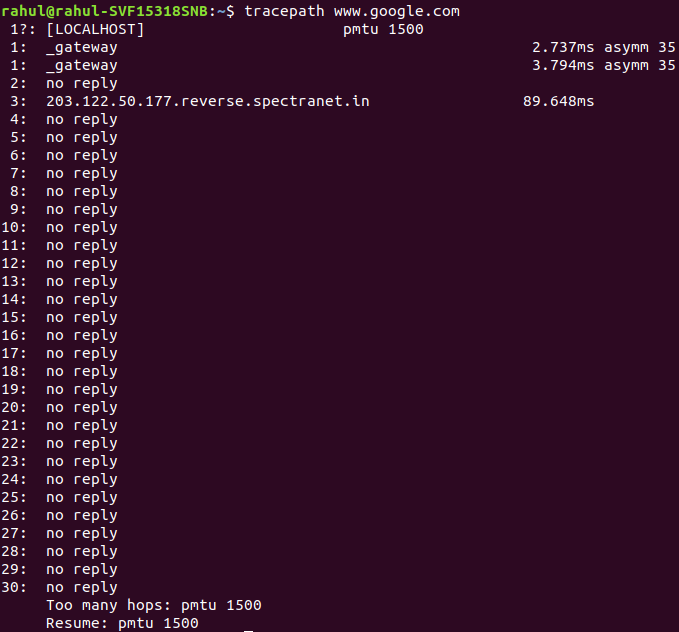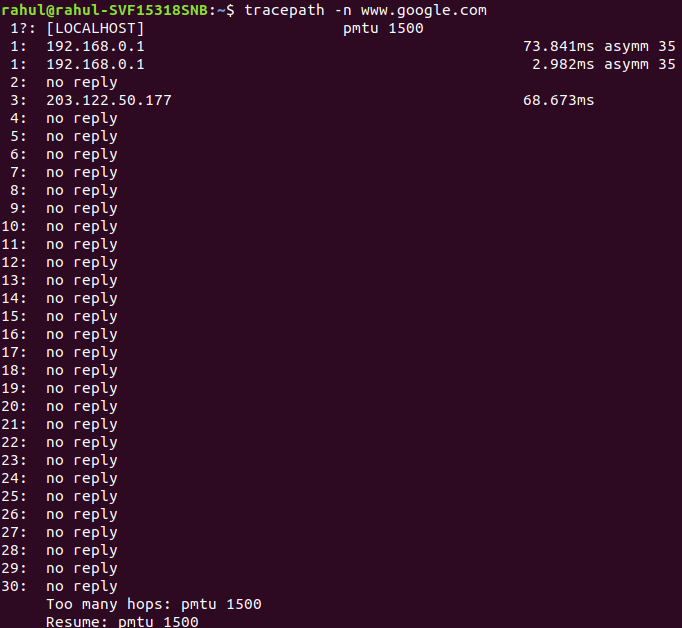tracepath command in Linux with Examples
Last Updated :
03 Apr, 2019
tracepath command in Linux is used to traces path to destination discovering MTU along this path. It uses UDP port or some random port. It is similar to traceroute, but it does not require superuser privileges and has no fancy options. tracepath6 is a good replacement for traceroute6 and classic example of the application of Linux error queues. The situation with IPv4 is worse because commercial IP routers do not return enough information in ICMP error messages. Probably, it will change, when they will be updated. For now, it uses Van Jacobson’s trick, sweeping a range of UDP ports to maintain trace history.
Syntax:
tracepath [-n] [-b] [-l pktlen] [-m max_hops] [-p port] destination
Example:
- tracepath command without any option: It will print the general syntax of the command along with the various options that can be used with the tracepath command as well as gives a brief description about each option.

- In the following example using tracepath command we are trying to trace path to destination for google.com.
tracepath www.google.com

Options:
- tracepath -n: This option prints primarily IP addresses numerically.
Example:
tracepath -n www.google.com

- tracepath -b: This option print both of host names and IP addresses.
Example:
tracepath -b www.google.com

- tracepath -l : This option sets the initial packet length to pktlen instead of 65535 for tracepath or 128000 for tracepath6.
Example:
tracepath -l 29 www.google.com

- tracepath -m : This option will set maximum hops (or maximum TTLs) to max_hops instead of 30.
Example:
tracepath -m 31 www.google.com

- tracepath -p: This option will set the initial destination port to use.
Example:
tracepath -p 8080 www.google.com

Share your thoughts in the comments
Please Login to comment...